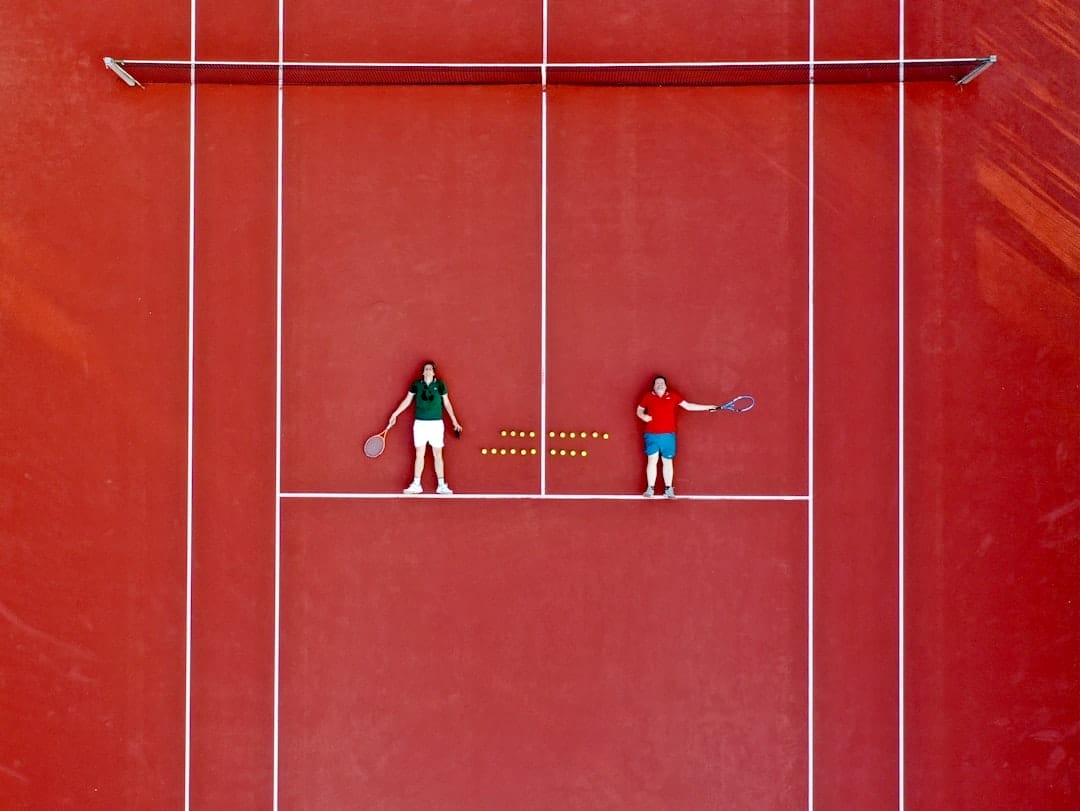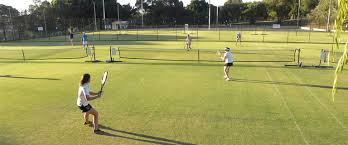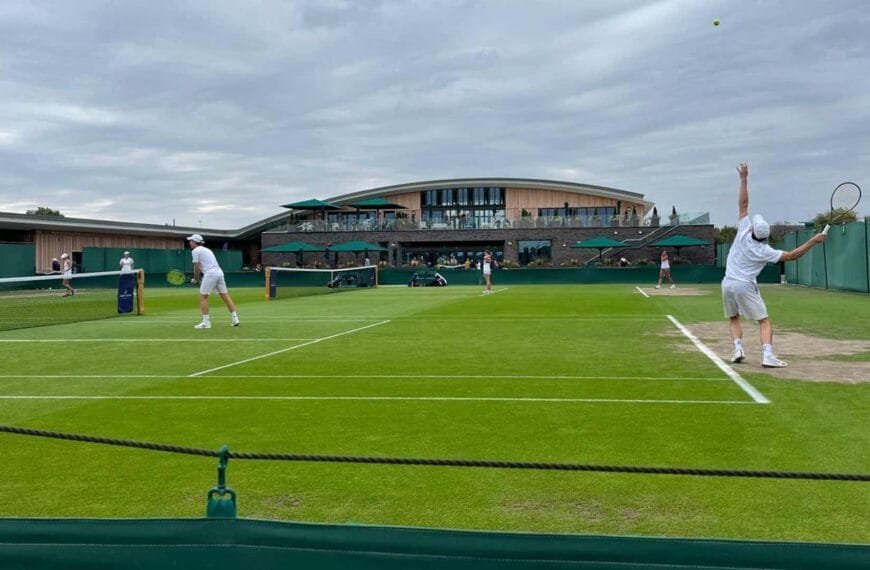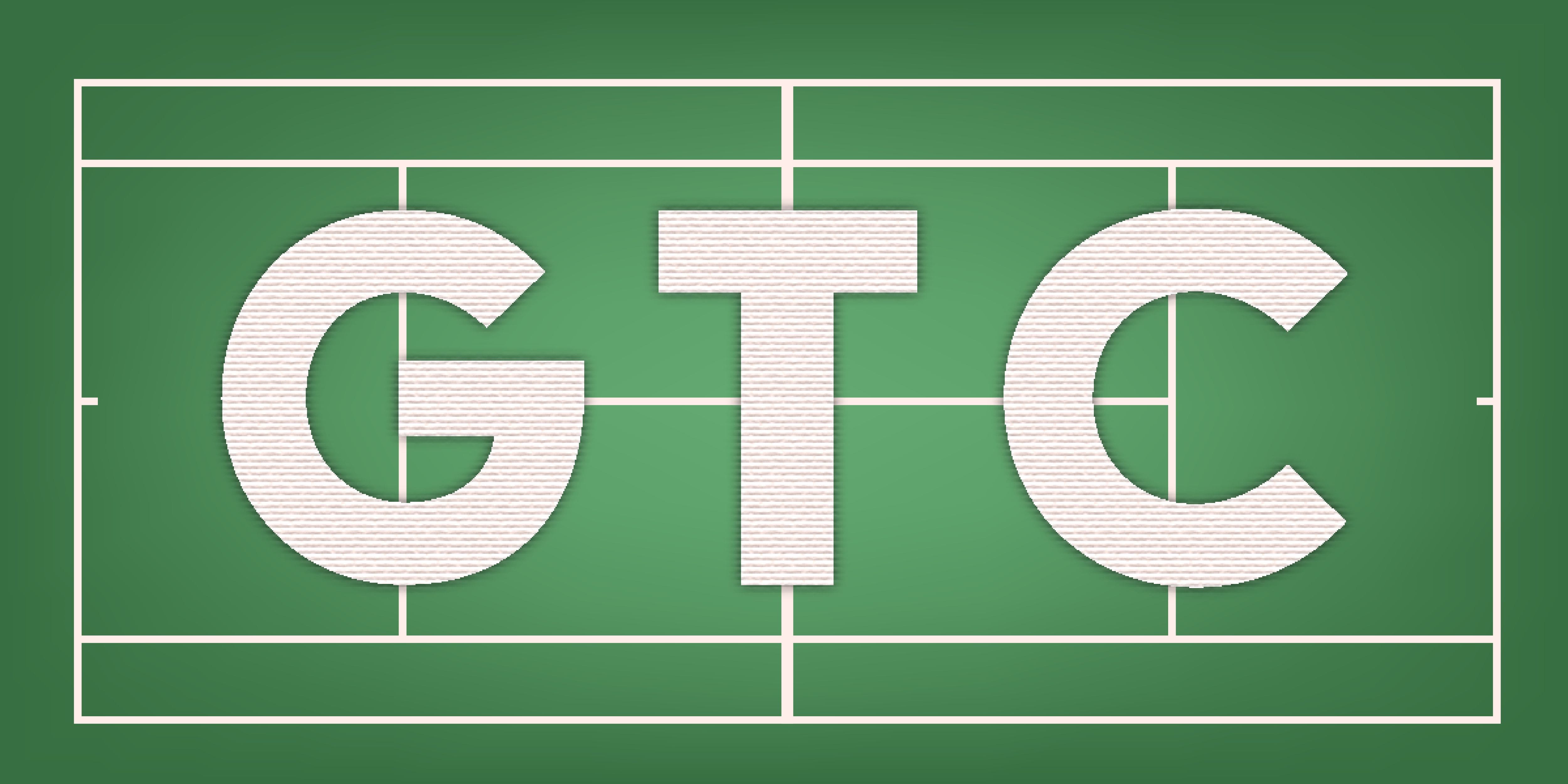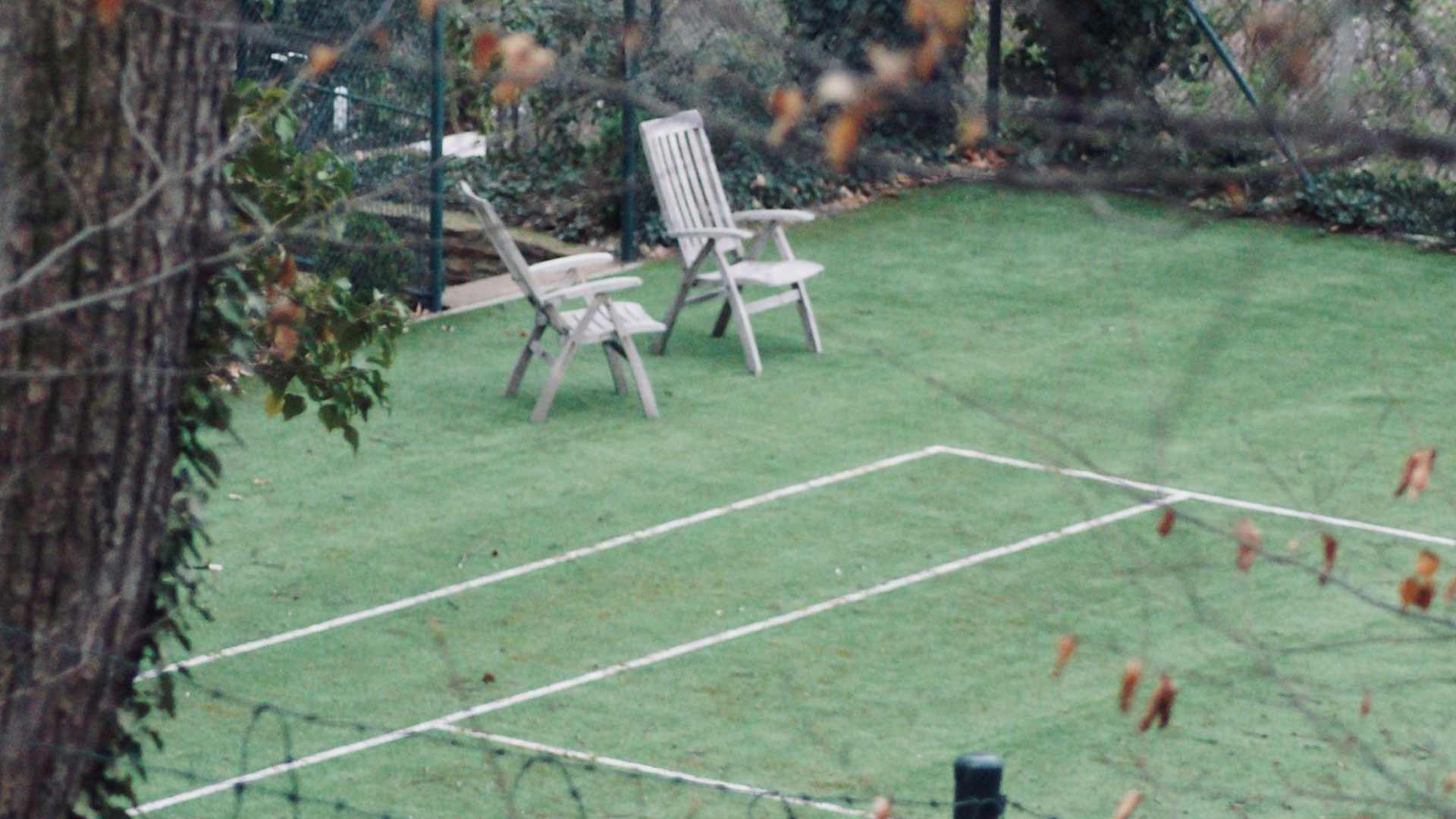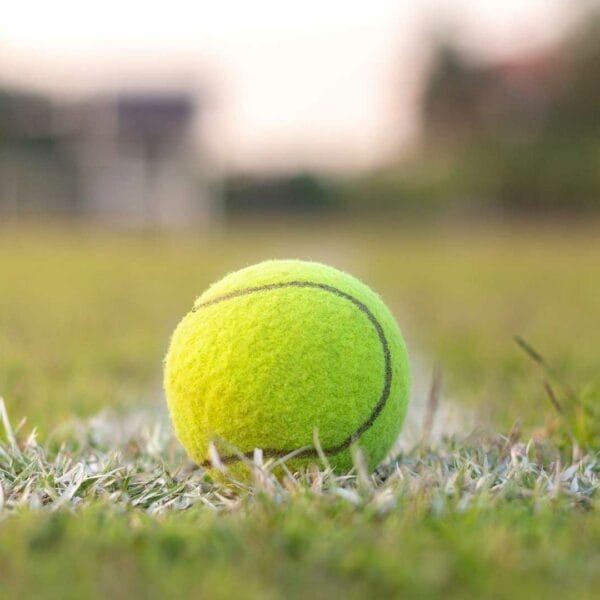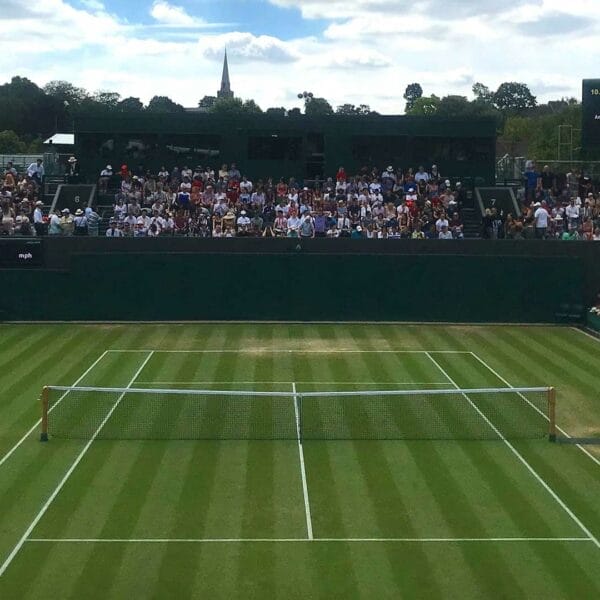If you’re looking to elevate your doubles tennis game, whether you’re a seasoned doubles player or a singles player wanting to transfer your skills to the doubles court, mastering a few essential strategies can dramatically improve your performance and results. Drawing from years of coaching experience and countless hours spent refining doubles tactics with my players, I’m excited to share my top five tips for playing doubles tennis that consistently deliver success.
These tips are not just theoretical. These are common corrections observed, along with the strategies that have proven most effective in competitive doubles matches. From tracking the ball at the net to positioning and shot selection, these insights will help you play smarter, move more effectively, and win more points. (Photo by Andreas Felske on Unsplash).
Table of Contents
- Step 1: Track the Ball Relentlessly When You’re at the Net
- Step 2: Be Less Protective of Your Tram Lines: Position Smarter at the Net
- Step 3: Understand and Use Your Court Territories Effectively
- Step 4: Aim Your Shots Strategically: Baseline to Baseline, Volley to Volley
- Step 5: Pass Through the Middle When Trying to Beat Two Net Players
- Frequently Asked Questions (FAQ)
- Conclusion
Step 1: Track the Ball Relentlessly When You’re at the Net
One of the fundamental skills that separates good doubles players from great ones is the ability to track the ball closely, especially when positioned at the net. This means your eyes and feet must be constantly engaged, ready to react to where the ball is heading.
For example, imagine your partner is serving. If they serve out wide, once the ball bounces, you should be tracking it towards that wide side, prepared to cover the line. This is crucial because a wide serve invites your opponent to attempt a down-the-line passing shot, and your readiness can shut down this option.
Conversely, if your partner serves down the tee, your focus should shift towards the centre, ready to intercept any return aimed down the middle. This serve style limits your opponent’s ability to pass you down the line, so tracking the ball precisely is key to capitalising on this advantage.
This tracking isn’t just for serving scenarios. It applies every time you’re at the net throughout the point. By actively following the ball, you minimise the gaps your opponents can exploit, increasing your chances of intercepting high-percentage shots.
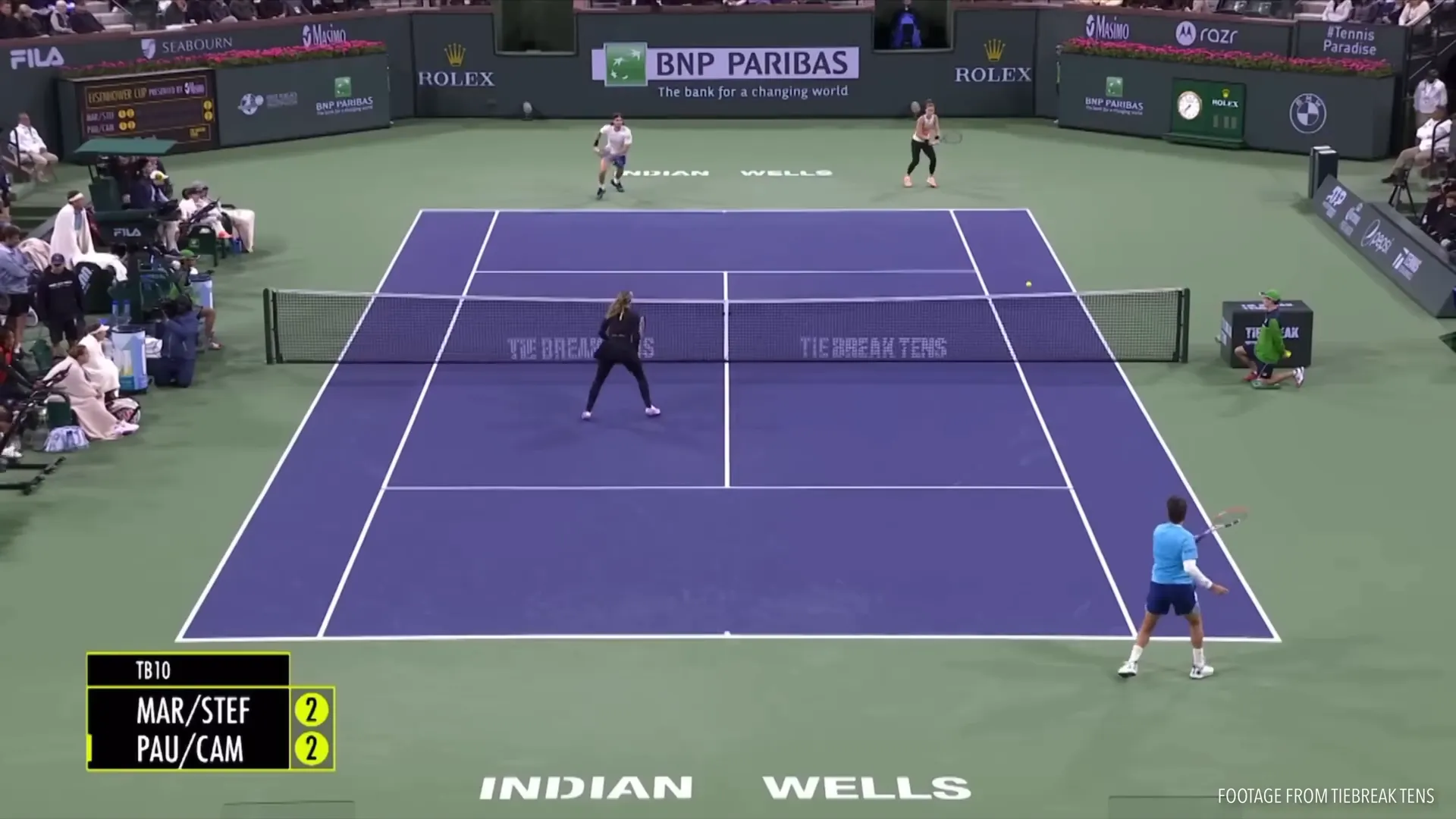
Bonus tip: Always keep your eyes looking forward towards the opponents, even if the ball is behind you. Many players make the mistake of turning around to look at their partner, which wastes precious time. By watching your opponents’ eyes and movement, you get an early read on where the ball is going, giving you a crucial head start in tracking and intercepting.
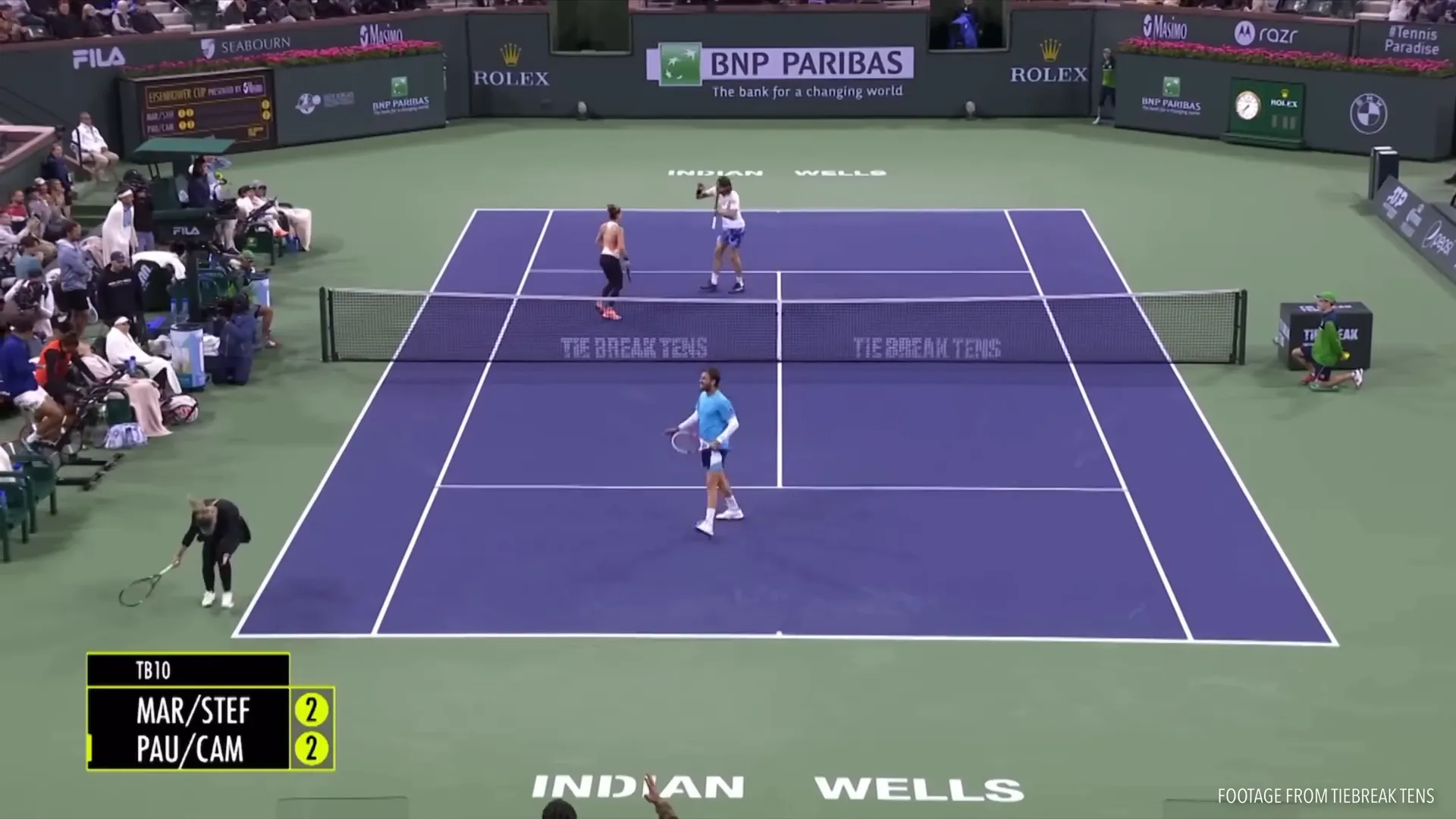
Step 2: Be Less Protective of Your Tram Lines: Position Smarter at the Net
Many net players fall into the trap of standing too wide to protect their tram lines, fearing a down-the-line pass. While this might seem logical, it actually hands your opponents a large, inviting space to hit their high-percentage cross-court shots.
The better approach is to position yourself closer to the middle of the service box. This might feel counterintuitive since it appears to leave the line open, but it forces your opponents into riskier down-the-line shots rather than comfortable cross-court options.
By shrinking the space available for their high-percentage shots, you increase your opportunities to get involved in the point with volleys—a key to finishing points quickly in doubles.
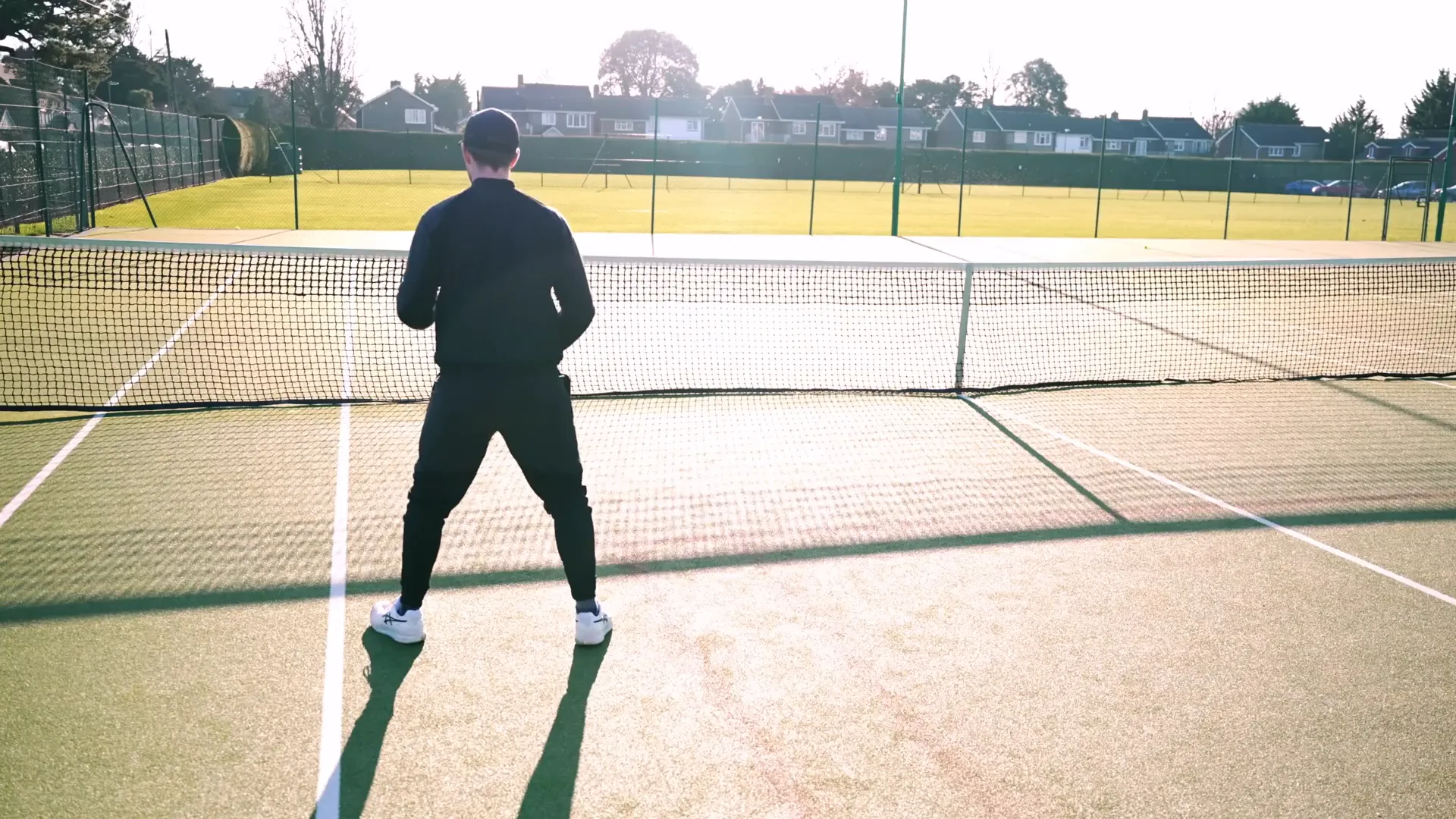
Remember, this is your starting position. If your partner sends the ball wide, you will, of course, shift to cover that shot, but your default stance should be more central rather than hugging the singles sideline.
Step 3: Understand and Use Your Court Territories Effectively
One of the most common errors I see in doubles is players trying to cover their half of the court by splitting it vertically down the middle. While it’s true that you should cover roughly 50% of the court, dividing it straight down the centre isn’t the most efficient method.
Instead, think of the court split diagonally, creating two triangles:
- The baseline player is responsible for the back triangle.
- The net player covers the front triangle.
This diagonal division makes more tactical sense because the net player is far better positioned to handle short shots, such as drop shots, landing in their triangle, while the baseline player can cover deeper lobs more effectively.
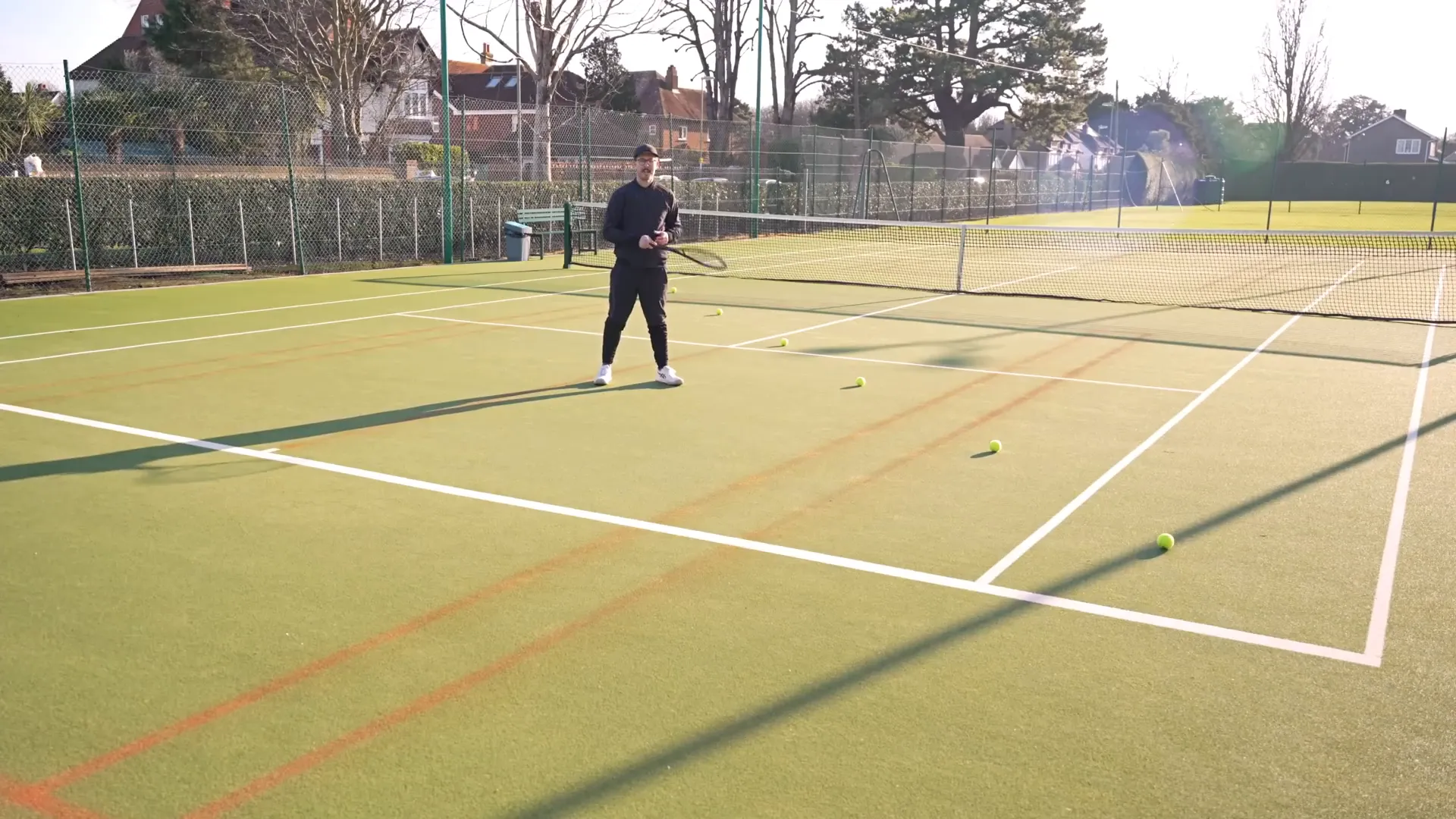
For example, if your opponents lob over your head, the baseline player should take deeper lobs, while the net player can intercept short lobs or drop shots. This division helps clarify who should move for which shots, especially at the start of the point.
Of course, doubles points are dynamic—partners may switch positions, both players might rush the net, or one might retreat to the baseline. So, while this diagonal split is a great starting point, it’s essential to develop instincts and fluid court awareness as you improve. This is where your ability to track the ball (tip 1) and maintain smart positioning (tip 2) becomes invaluable.
Step 4: Aim Your Shots Strategically: Baseline to Baseline, Volley to Volley
Shot selection and placement are critical in doubles tennis. A straightforward rule to keep in mind is this:
- When you’re playing from the baseline, avoid hitting shots directly at the volleyer.
- When you’re at or approaching the net, avoid aiming at the baseliner.
Why? Because hitting to the volleyer from the baseline gives them ample time and space to execute an aggressive put-away volley. Conversely, if you’re at the net and you hit towards the baseliner, they’ll have enough time to lob or pass you, negating your advantage.
Instead, when you’re at the net, aim your volleys low and fast at the opposing volleyer’s feet or through the gap between them and their partner. This forces lightning-quick reactions and often results in weak returns or outright winners.
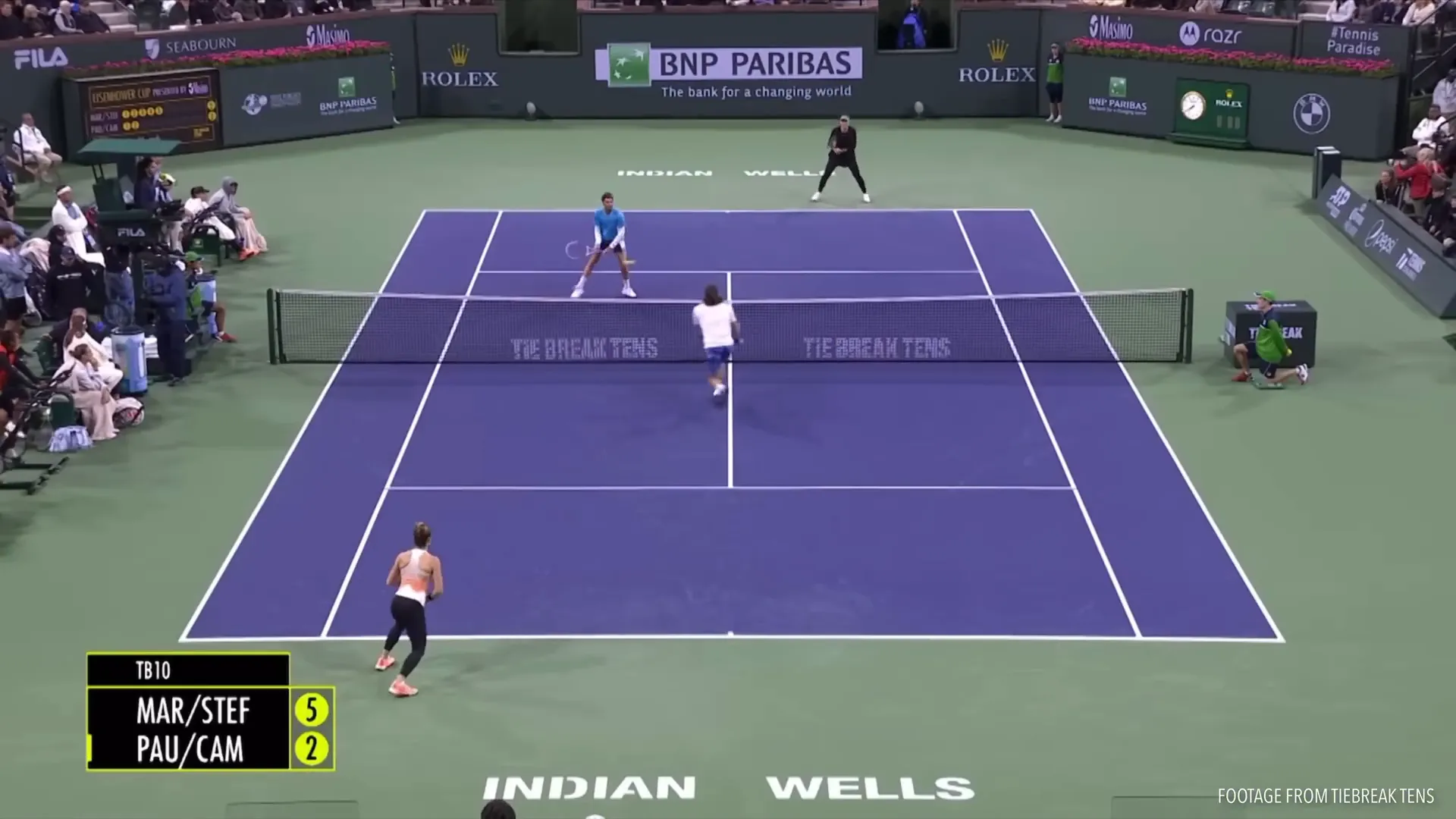
Similarly, when returning serve from the baseline, avoid giving the volleyer easy put-away opportunities by steering clear of their zone unless you have a clear opening to go big down the line.
Following this simple “baseline to baseline, volley to volley” guideline will help you reduce unforced errors and increase your chances of winning points.
Step 5: Pass Through the Middle When Trying to Beat Two Net Players
If you’re up against a strong doubles team with both players at the net, your best bet when attempting to pass them is to go down the middle of the court rather than down the line. Here’s why:
- Minimise the risk of missing wide: Passing shots down the middle are easier to keep in play because you can’t miss wide on either side.
- Force confusion between the net players: When both players converge on a middle ball, they risk clashing and miscommunication since they often don’t have time to call “mine” or “yours.”
- Limit their angles for passing shots: If your opponents reach a down-the-line passing shot, they have more angles to exploit. Passing through the middle makes it harder for them to find effective returns.
Even if your opponents get the ball back, passing through the middle often puts you in a better position to continue the attack and finish the point.
Additional Resources for Doubles Tennis Improvement
While these five tips form the foundation of strong doubles play, there is always room to expand your knowledge and sharpen your skills. For those serious about doubles tennis, I offer comprehensive courses and tutorials that dive deeper into tactics such as poaching, positioning, and mental strategies on the court.
Check out Doubles Masterclass course for in-depth training designed to transform your doubles game:
Frequently Asked Questions (FAQ)
Q: How important is communication in doubles?
A: Communication is vital in doubles. It helps avoid confusion about who will take shots, especially when both players are near the net. Calling “mine” or “yours” clearly can prevent clashes and improve court coverage.
Q: Should singles players change their style when playing doubles?
A: Yes, doubles requires more teamwork, positioning, and volleying skills than singles. Singles players should focus on adapting their court positioning, improving net play, and learning to cover their partner effectively.
Q: What is the best formation for doubles beginners?
A: The traditional one-up-one-back formation is ideal for beginners. One player stays at the net to pressure opponents, while the other covers the baseline. This setup balances court coverage and allows players to develop their skills in their respective zones.
Q: How can I improve my volleying skills?
A: Practice tracking the ball closely at the net, keep your racket ready, and focus on hitting low, controlled volleys with pace. Drills that simulate match conditions, such as intercepting serves or poaching, will also help improve your volleying under pressure.
Q: When should I poach in doubles?
A: Poaching is most effective when your partner’s serve or return forces a predictable shot from opponents. Timing and anticipation are crucial; you want to move forward to intercept a ball that’s likely to cross your side quickly. Practicing poaching helps you develop instincts for these moments.
Conclusion
Improving your doubles tennis game is about mastering key principles of positioning, communication, and shot selection. By tracking the ball carefully at the net, positioning yourself smartly rather than protectively, understanding your court territories with a diagonal mindset, aiming your shots strategically, and passing through the middle against strong net players, you’ll raise your doubles performance significantly.
Remember, doubles is a fast-paced, dynamic game that rewards players who think ahead, move proactively, and work seamlessly with their partners. Implement these tips consistently, and you’ll find yourself winning more points and matches.
Keep practicing, stay focused on these strategies, and enjoy the thrill of doubles tennis at a higher level!
For more tips and detailed lessons on doubles, check out my other videos and courses. I look forward to helping you become a dominant doubles player on the court.
This article was created from the video My Top 5 Doubles Tips #tennis

